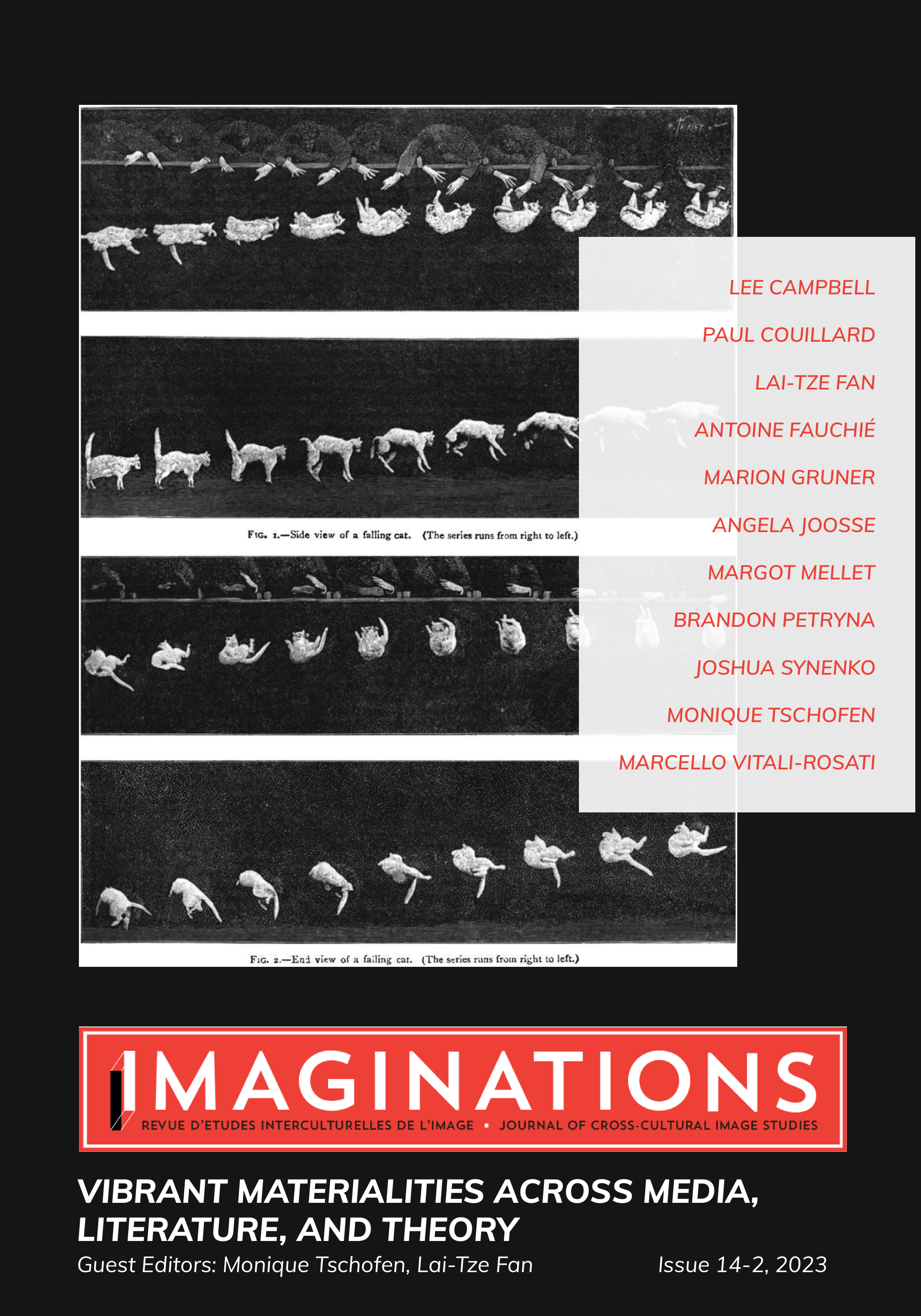Reading Like A Replicant: Blade Runner 2049, Pale Fire, and the Archival Embodiment of Literature
DOI:
https://doi.org/10.17742/IMAGE29695Abstract
If androids dream of electric sheep, do replicants read analog novels? In the dystopian sci-fi world of Blade Runner 2049 (2017), literature plays a complex role. In particular, the film engages in a multi-leveled way with Vladimir Nabokov's novel Pale Fire (1962). A hardcover copy of the book appears in one scene, and it is quoted and covertly referenced in others. These appearances are like metafictive keys to a pattern of possible meanings, through which the film both embodies and reflects upon its method of archival replication. Translating between codex, screen, and holographic media, the film reanimates its source materials, dramatises the affinity between literary texts and embodied life, and suggests that literature may be a vector of resistance to techno-capitalist archival control.
References
Backe, Emma Louise. “Replicants and Reproduction: Blade Runner 2049 and Sci Fi’s Obsession with Motherhood.” The Geek Anthropologist, Oct. 19 2017, [https://thegeekanthropologist.com/2017/10/19/replicants-and-reproduction-blade-runner-2049-and-sci-fis-obsession-with-motherhood/]{.underline}.
Boyd, Brian. Nabokov’s Pale Fire: the Magic of Artistic Discovery. Princeton University Press, 1999.
Campbell, Ian. “Metafiction and Pale Fire in Blade Runner 2049.” The Projector, vol. 19 no. 2, summer 2019, https://www.theprojectorjournal.com/campbell-metafiction-and-pale-fire/.
Deleuze, Gilles. “What is the Creative Act?” Two Regimes of Madness, edited by David Lapoujade, translated by Ames Hodges and Mike Taormina, Semiotext(e), 2007, pp. 317-329.
Derrida, Jacques. Archive Fever: a Freudian Impression. Translated by Eric Prenowitz, University of Chicago Press, 1998.
Dick, Philip K. Do Androids Dream of Electric Sheep? Del Rey, 2017.
Ericson, Aron. “Are You For Real?” Blade Runner 2049 and Philosophy: This Breaks The World, edited by Robin Bunce and Trip McCrossin, Open Court, 2019, pp. 19-25.
Fresán, Rodrigo. The Remembered Part. Translated by Will Vanderhyden, Open Letter, 2022.
Haraway, Donna. “A Cyborg Manifesto.” Simians, Cyborgs and Women: The Reinvention of Nature, Routledge, 1991, pp. 149-181.
Hayles, N. Katherine. How We Became Posthuman: Virtual Bodies in Cybernetics, Literature, and Informatics. University of Chicago Press, 1999.
Heersmink, R., and C.J. McCarrol. “The Best Memories: Identity, Narrative, and Objects.” Blade Runner 2049: a Philosophical Exploration, edited by Timothy Shanahan and Paul Smart, Routledge, 2020, pp. 87-107.
Iser, Wolfgang. The Fictive and the Imaginary: Charting Literary Anthropology. Johns Hopkins, 1991.
Karshan, Thomas. “Pale Fire and the Genre of the Literary Game.” Vladimir Nabokov and the Art of Play, Oxford University Press, 2011, retrieved from Oxford Scholarship Online, 4 Aug. 2021, DOI: 10.1093/acprof:oso/9780199603985.003.0007, pp.195-232.
Mulhall, Stephen. “The Alphabet of Us: Miracles, Messianism, and the Baseline Test in Blade Runner 2049.” Blade Runner 2049: a Philosophical Exploration, edited by Timothy Shanahan and Paul Smart, Routledge, 2020, pp. 29-47.
Nabokov, Vladimir. Pale Fire. Vintage, 1989.
Rangwala, Shama. “No Future.” Jacobin, Nov. 11 2017, [https://jacobin.com/2017/11/blade-runner-2049-science-fiction-dystopia]{.underline}.
Scott, Luke, director. 2048: Nowhere to Run. Screenplay by Hampton Fancher and Michael Green. Alcon Entertainment, Columbia Pictures, Thunderbird Entertainment, Scott Free Productions, 2017.
Scott, Ridley, director. Blade Runner. Screenplay by Hampton Fancher and David Peoples. Warner Brothers, The Ladd Company, Shaw Brothers, Blade Runner Partnership, 1982.
Shakespeare, William. Timon of Athens. Edited by John Jowett, Oxford UP, 2004.
Villeneuve, Denis, director. Blade Runner 2049. Screenplay by Hampton Fancher and Michael Green. Alcon Entertainment, Columbia Pictures, Bud Yorkin Productions, Torridon Films, 16:14 Entertainment, Thunderbird Entertainment, Scott Free Productions, 2017.
Published
How to Cite
Issue
Section
License
Copyright (c) 2023 Lee Campbell

This work is licensed under a Creative Commons Attribution-NonCommercial-NoDerivatives 4.0 International License.

This work by https://journals.library.ualberta.ca/imaginations is licensed under a Creative Commons 4.0 International License although certain works referenced herein may be separately licensed, or the author has exercised their right to fair dealing under the Canadian Copyright Act.




